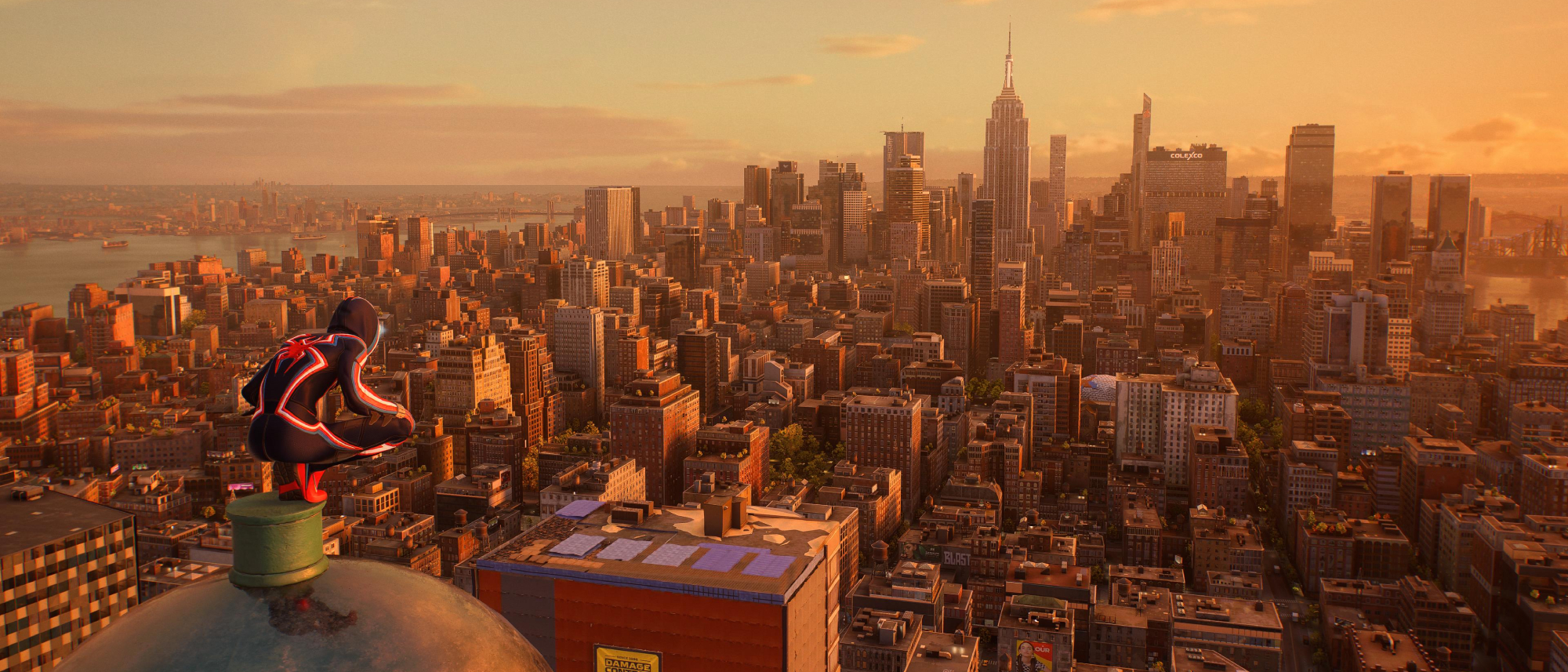Laptop Mag Verdict
Spider-Man 2 yields fantastic action set pieces, exhilarating boss fights, and a gorgeous rendition of NYC, but at its center lies a powerful narrative pushing against the one-dimensionality of “hero versus villain” tropes to focus on their humanity.
Pros
- +
Brawlers have never felt this good
- +
New traversal gadgets are fantastic
- +
Narrative woven with humanity
- +
Exhilarating main missions
- +
NYC is stunning
Cons
- -
Inconsistent facial animations
- -
Occasionally awkward writing
- -
Open-world tedium
Why you can trust Laptop Mag
My history with Insomniac’s output over the previous two PlayStation generations has been somewhat mixed. Ratchet & Clank’s movie-tie-in reboot, while fine, disappointed in its lack of creativity. Marvel’s Spider-Man and Miles Morales’ spin-off were big steps up, but I still found that they fell short of excellence.
While everyone sang high praise for Ratchet & Clank: Rift Apart, it failed to spark my imagination in the same way PS2 and PS3-era Insomniac did. I believed Spider-Man 2 would fall prey to the same fate, and while I figured I’d really like it, I had no reason to think it would reach greatness.
Yet regardless of my numerous gripes, including an occasionally exhausting open-world, immersion breaking flaws in presentation, and the writing sometimes missing its goals, I was terribly wrong. Spider-Man 2 exceeded expectations, offering an emotional narrative surrounded by superb traversal tech and joyous brawler combat.
Spider-Man 2 is Insomniac Games’ greatest effort in over a decade, and while the developer’s approach to open-world design has yet to hit the bullseye, this campaign showcases its expertise with a compelling story and unforgettable spectacle. It is one of the best PS5 games in the console’s growing library.
Everyone deserves a second chance
Heroes don’t kill people. Our two Spider-Men have always tried to adhere to this, but when lives are at stake, why shouldn’t they act? Is that stubbornness the result of a childish delusion? Does the concept “killing is inherently evil'' hold up even when the death of one villain could save exponentially more innocents?

If you think anything like me, Spider-Man’s refusal to kill can be frustrating. That inability to act has resulted in the deaths of people he loves throughout comic books, cartoons, film and other games. Prior to Spider-Man 2, I sincerely believed he was wrong.
But through a gripping tale revolving around the necessity of redemption, forgiveness, and letting go of your hatred, Insomniac has taken a chisel to my pessimistic worldview. Spider-Man 2 shows first-hand why that core facet of any Spider’s moral compass is vital. It’s the most I have ever sympathized with the “no killing” conviction seen throughout many superhero stories.
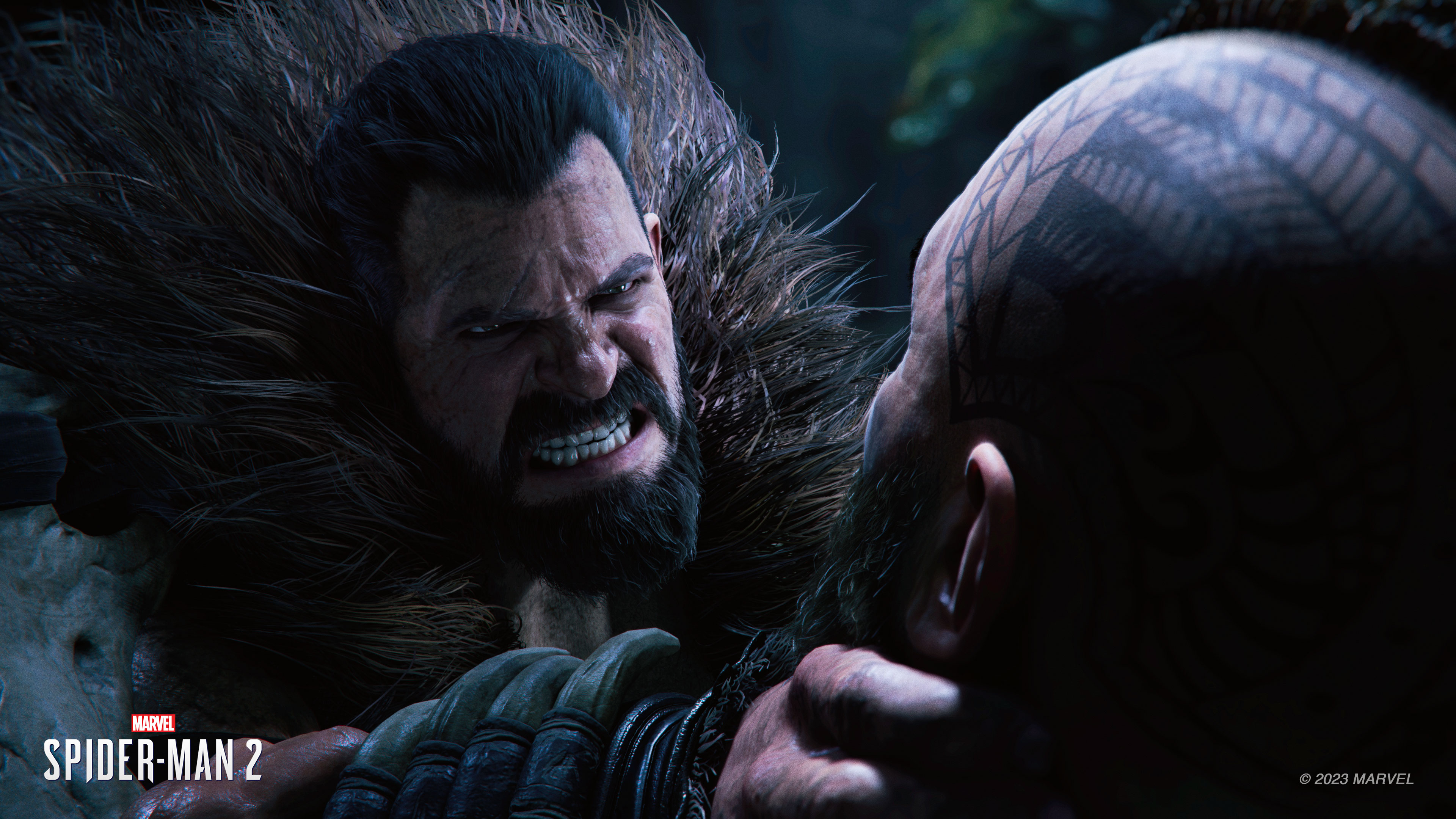
This is a narrative about second chances, and for that reason, Kraven the Hunter acts as the perfect catalyst. His hunt of other villains brings the question of whether they deserve saving into focus. That question isn’t exclusively explored through the main story either, as it is visible within optional missions and side-character arcs.
It only makes sense that this was the best game to introduce Venom—the notorious symbiote that infamously bonds with Peter Parker before he begins to lose his sense of self. Most of us know the basic threads of this plotline, but how Insomniac treats Venom as more than just a terrifying alien is part of what makes the story so powerful.
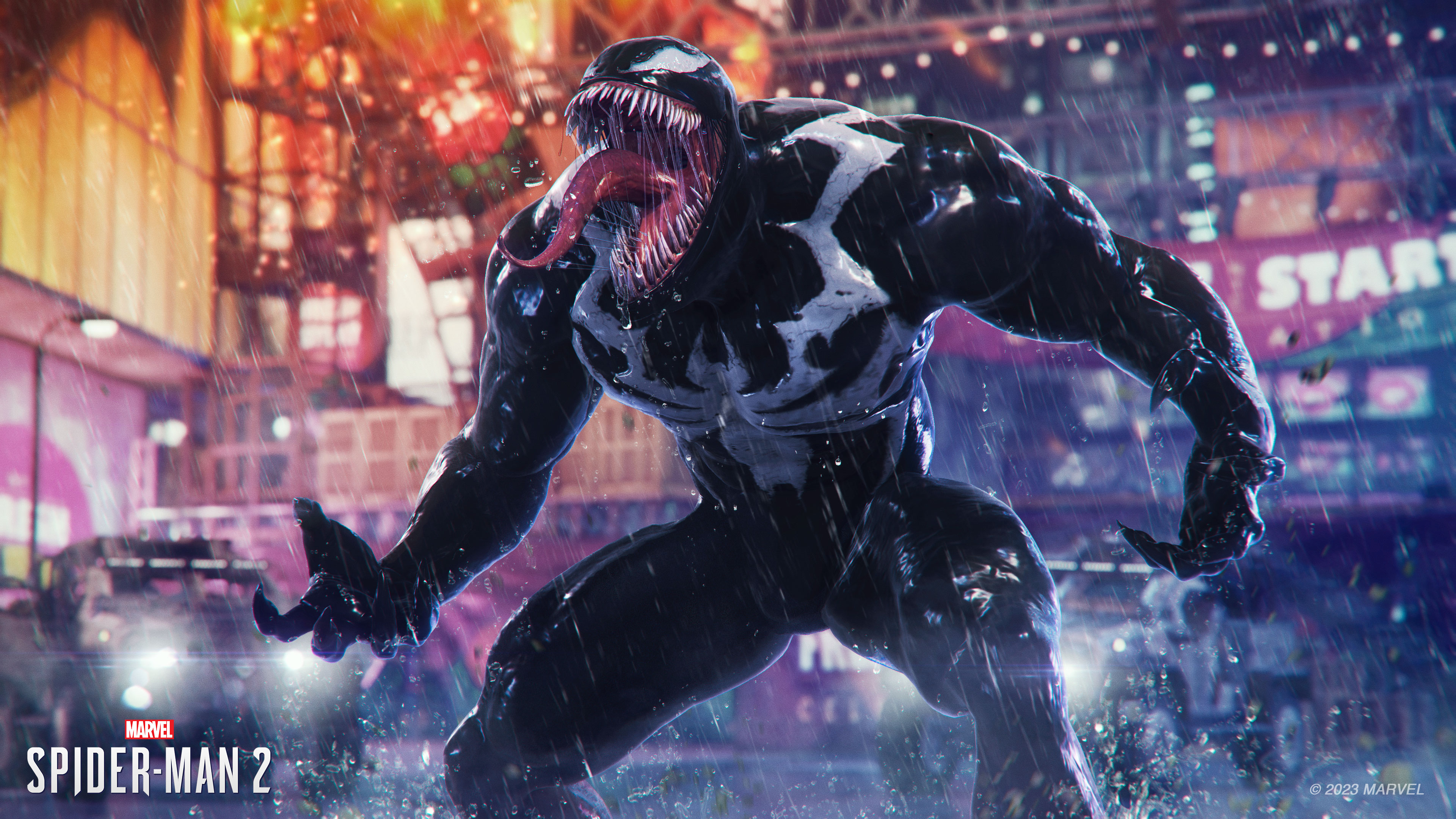
Venom is a tool to comment on the importance of our humanity. That aforementioned refusal to give up on people even when they’re at their lowest is vital when the protagonist themselves is at their lowest. This script rises above the titles of hero and villain to tell a narrative about the people underneath the mask.
The near unbreakable love that Harry Osborne and Peter Parker share—including Miles Morales’ internal struggles regarding the fate of a character I won’t name—culminates into an emotionally poignant narrative, focusing on the most human aspects of any superhero’s impossible job.
While Venom’s inclusion is inherently wrapped up in Peter Parker’s story, Insomniac did a phenomenal job giving Miles Morales his big moments. It takes a little while before it comes into view, and I won’t give away how the developer ties that central theme to his character arc, but it is brilliant and results in one of the game’s best moments.
Script shortcomings
While Spider-Man 2’s heartfelt exchanges are phenomenal, the story is at its worst when characters act casually. Moments when they crack jokes with one another, callback to nostalgic memories, or chat about mundane things feels forced.
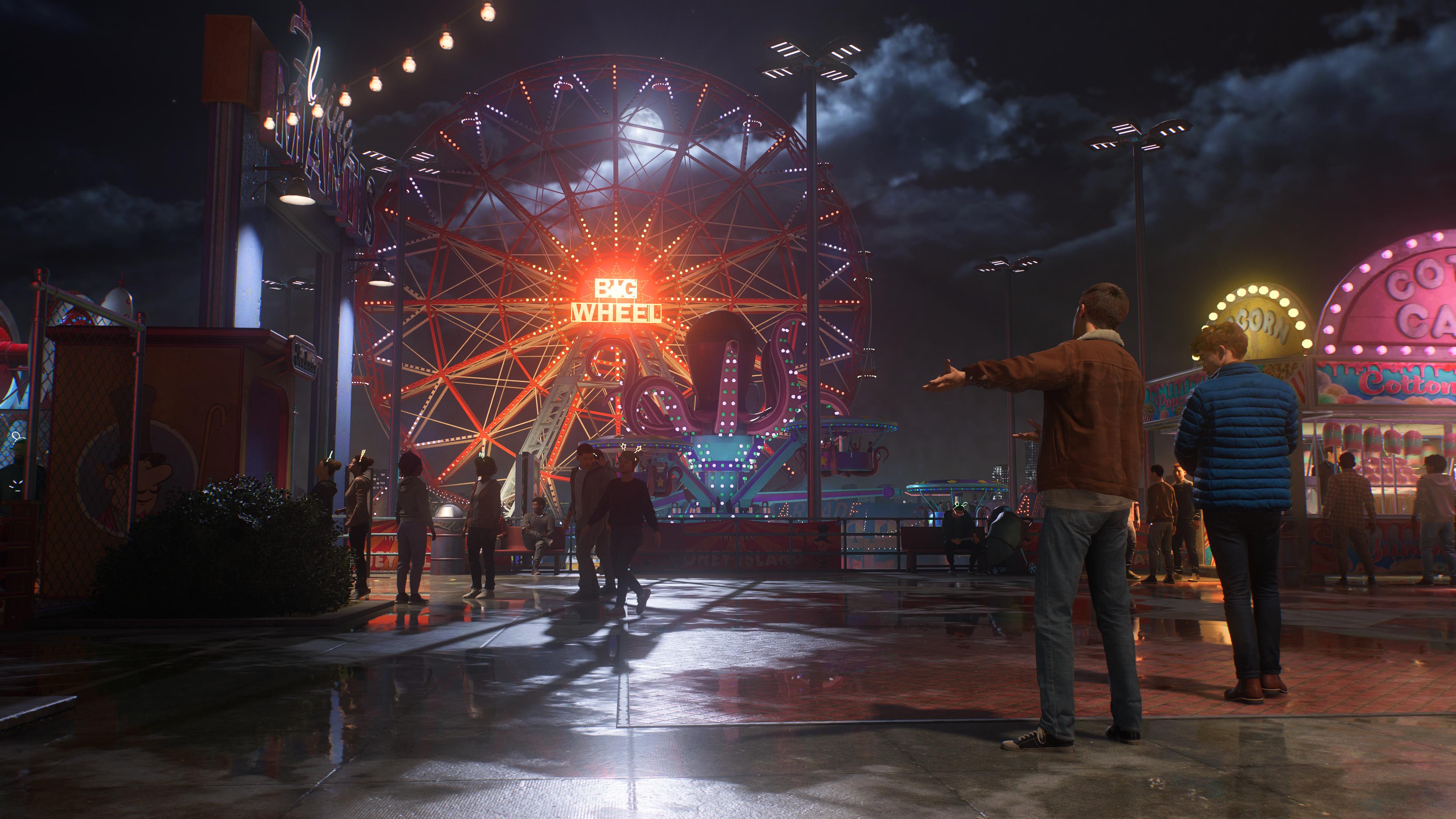
Peter Parker and Mary Jane Watson lack chemistry and it’s hard to believe that the two are actually in a relationship. The immersion is sometimes shattered when idle banter of best friends or lovers comes across as overly scripted. Not all of it is awkward, but there are a few scenes in the game’s first half that made me think “this isn’t how human beings speak.”
Peter Parker sounding like an edgy, pubescent teen while bonding with Venom is a little silly. Some of his dialogue is absurd, as can be seen during Spider-Man 2’s gameplay reveal back in May: When the two Spider-Men are considering going after Dr. Connors, Peter claims he can do it alone. Miles then responds, “Are you sure? He’s got big teeth,” only for Peter to say “So do I.” Some might find this to be charming, but it took me out of it.
Feel good brawlin’ and swingin’
Spider-Man 2’s excellent mechanical additions ensure the player’s traversal of a now-expanded New York City is equal parts swift and satisfying. Soaring across the city without a care while using the wingsuit is a highlight. New web-swinging tricks that catapult the Spider-Men into the sky, super jump mid-air, hook onto buildings to swing around, dash forward in a dazzling burst of speed, and swiftly dive downwards before flinging back upwards with tons of momentum contribute to this fantastic feeling movement.
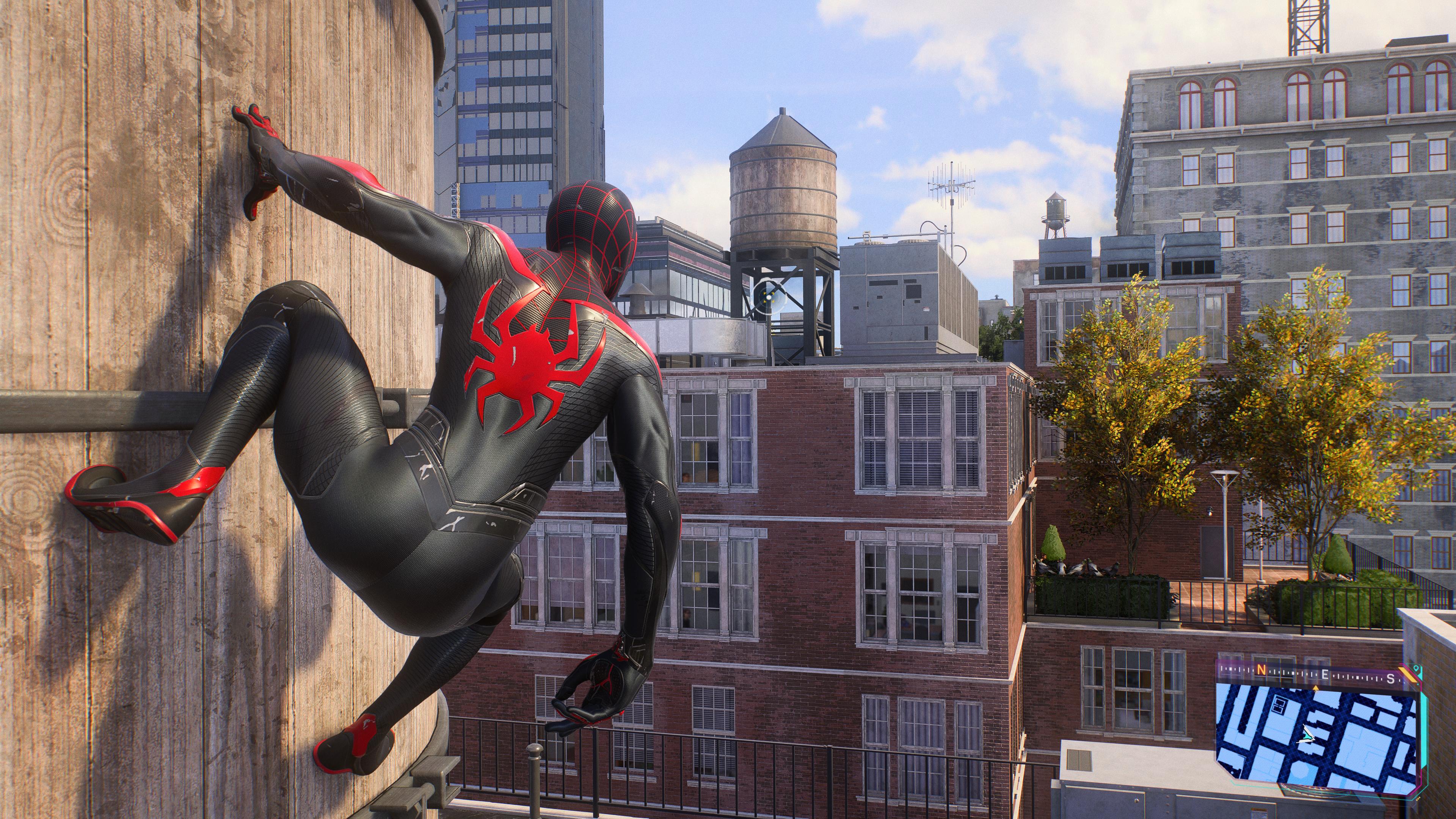
Now that Brooklyn and Queens are part of the picture, Insomniac responded with this larger map by exponentially increasing the player’s potential speed. I frequently returned to the game’s ability screen to remind myself how to perform specific tricks early on. Combining those new abilities together successfully always felt great, even though it took a bit to get used to.
Each new gadget is crafted with satisfying sound design and visual flair. I can’t help but smile whenever launching a volley of electric bolts that thrusts enemies into the air, absorbed by the intense vibrations of each discharge. My favorite contraption grabs every foe and object in the vicinity before slamming them together with a hilarious amount of force. Hearing the sound of boxes break and barrels crash as Spider-Man’s enemies bonk their heads is euphoric.
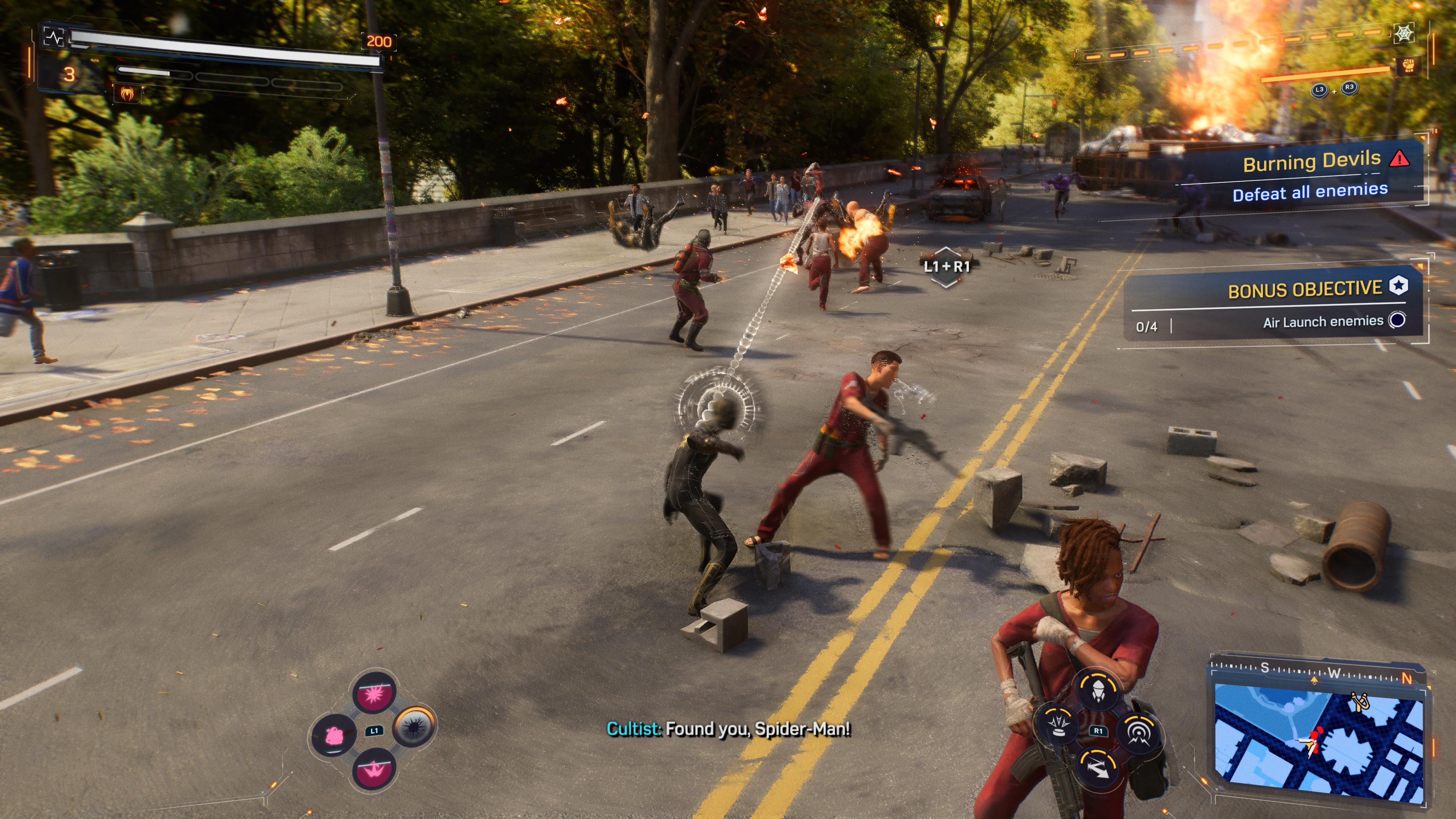
Special abilities are no different. One lets Peter grapple onto an enemy, double-kick them into the air, and emit a shocking eruption that launches other foes in the area. Half of the time I use that ability because I adore the sheer visceral force of its explosion. Another has Miles summon a chain lightning bolt that jumps between enemies and sends them flying. Nearly everything is accompanied by a similar degree of intensity, and even though these skills are necessary for practical reasons, they feel fantastic to use just for fun.
There is no shortage of abilities throughout the game, either. Miles and Peter each get eight at least, which are unlocked at different points in the narrative. There are only four gadgets though, so you won’t be picking which ones to use in battle, but you can upgrade them in fun ways. Players also have web shooters, an ultimate ability, and the focus bar that allows for either finishers or self-heals. All of that is built upon an excellent foundation where you zip between enemies while performing unique combos.
I binged Spider-Man 2 within a three day period, and ever since finishing, I have itched to swing, soar, and fight my way through NYC again.
Spectacular difficulty
I played Spider-Man 2018 and Miles Morales on the Spectacular difficulty, but neither were as intense as this. I once tried taking out a hideout webs blazing but was so overwhelmed by heavy enemies that require quick reflexes and varied methods of defense that I died immediately. A couple of more tries didn’t help, so I resorted to subtlety. This wasn’t a problem in the other games, as I would either engage in the stealth mechanics or fight depending on my mood.
A rogue rocket was the hardest thing to deal with beforehand, but in Spider-Man 2, heavy enemies can be brutal. Even standard foes can block your punches before following up with a devastating strike that cannot be dodged.
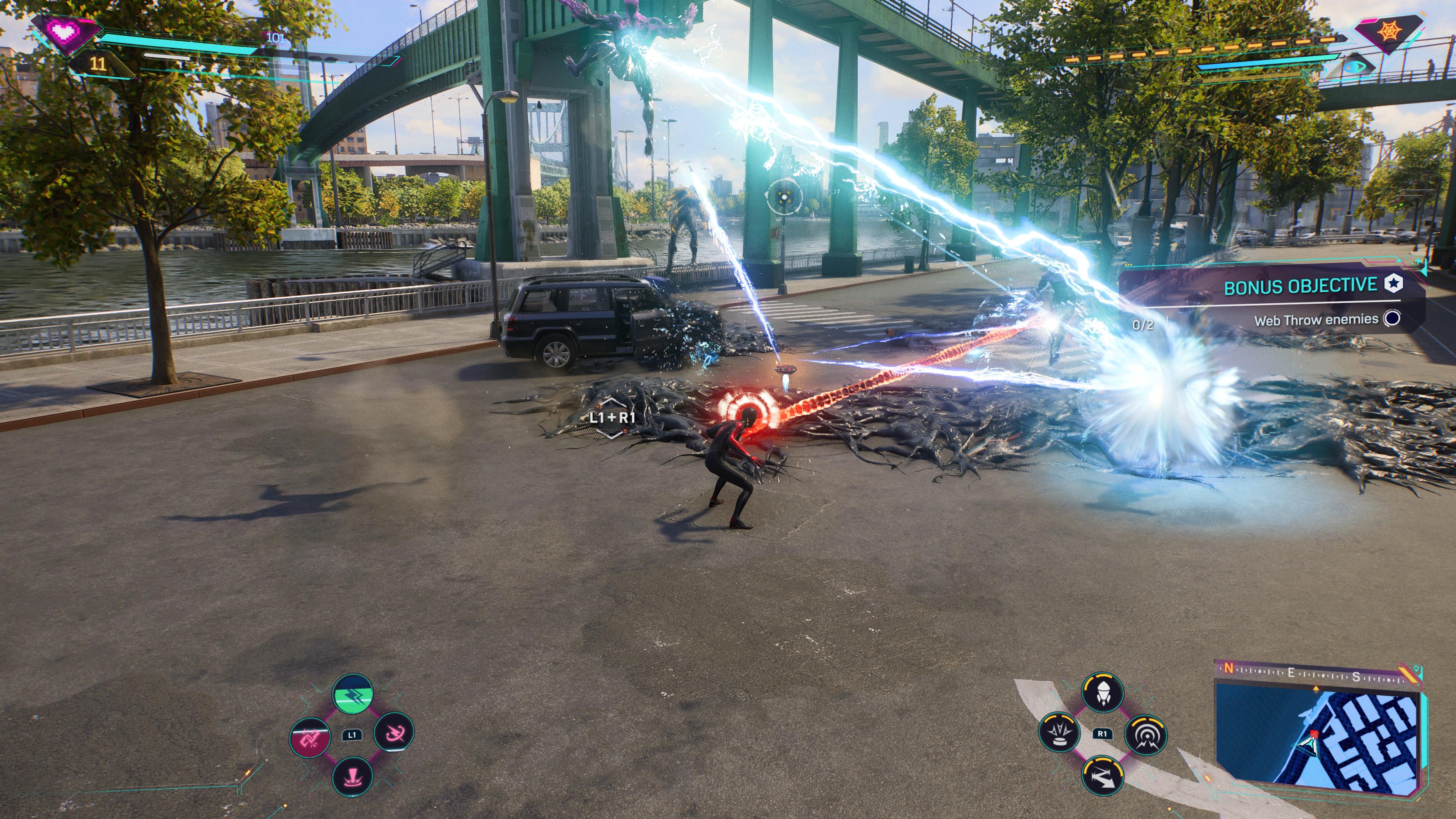
Forcing the player to juggle between unique defensive inputs like jumping, parrying or dodging depending on the type of attack forced me into a new game awareness that was never quite present in the previous games, especially against bosses. If it wasn’t for Insomniac setting your checkpoint whenever a new health bar appears during those fights, I would have struggled far more.
This isn’t to say Spider-Man 2 is hard, but it required me to play consciously. As the player levels up, those aforementioned special abilities and gadgets are vital towards making boss fights and other difficult encounters less challenging. However, it doesn’t change that many fights forced me to unleash everything I had to come out of the other side. I love a game that encourages the player to use their arsenal in full.
Inconsistent animation
Spider-Man 2’s presentation jumps from consistently fluid to occasionally poor. Facial animations are the biggest offender here, as Peter Parker and MJ look stiff. Kraven, Harry and Miles don’t share these issues, but those two aforementioned characters look uncanny (pun not intended) when showing complex facial expressions.
I briefly looked at Spider-Man 2018 cutscenes to see if the same issue was present with MJ and Peter, and while the new faces are more complex during still shots, the older faces expressed in natural ways. It’s hard to say if this is an issue that can be fixed with an update or if it’s just a result of playing an early copy of the game, but it was distracting throughout my 27-hour playthrough.
Some scenes also feature environments with a lack of detail, in particular one of the first cutscenes set in a classroom. The room was poorly lit with models missing shadows, while Miles and Peter’s movements throughout were robotic. These issues go away later in the game, but it was a startling opening.
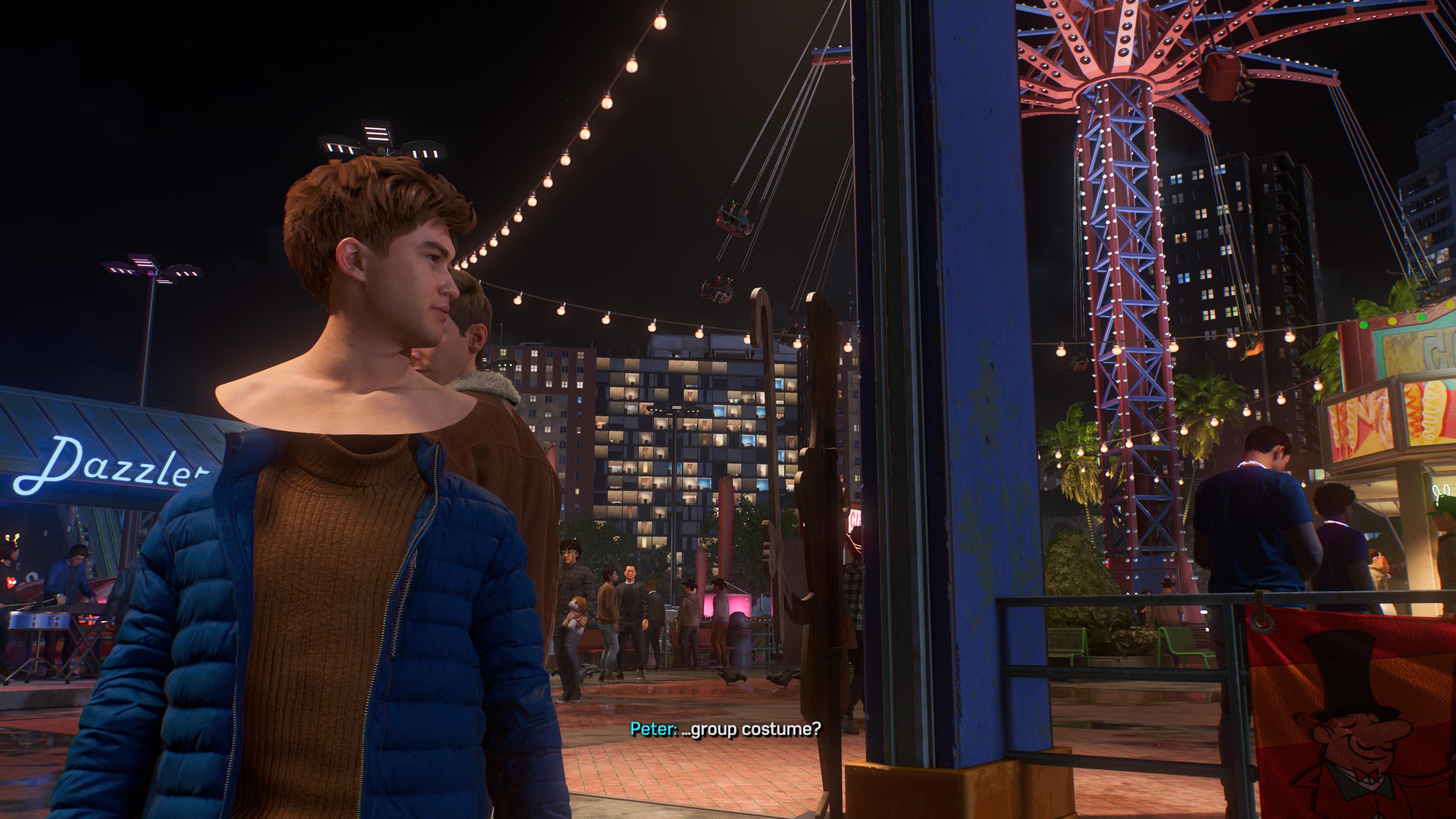
Spider-Man 2’s Coney Island mission, while adorable on paper, is especially messy. MJ got stuck in walls while walking, Harry’s head detached from his body when descending some stairs, and I got trapped next to a bathroom as Peter (which forced me to restart from checkpoint). The camera during roller coaster rides lacked dynamic angles, and the ability to raise your arms or cheer in the middle of dialogue is awkward.
NYC brought to life
It’s no secret that a majority of Spider-Man’s video game adaptations take place in New York. There are exceptions, but both Insomniac’s first game and Miles Morales’ spin-off already gave us a run through the developer’s vision of NYC. Repurposing this setting was sure to get old, so the developer builds upon it with the additions of Brooklyn and Queens.
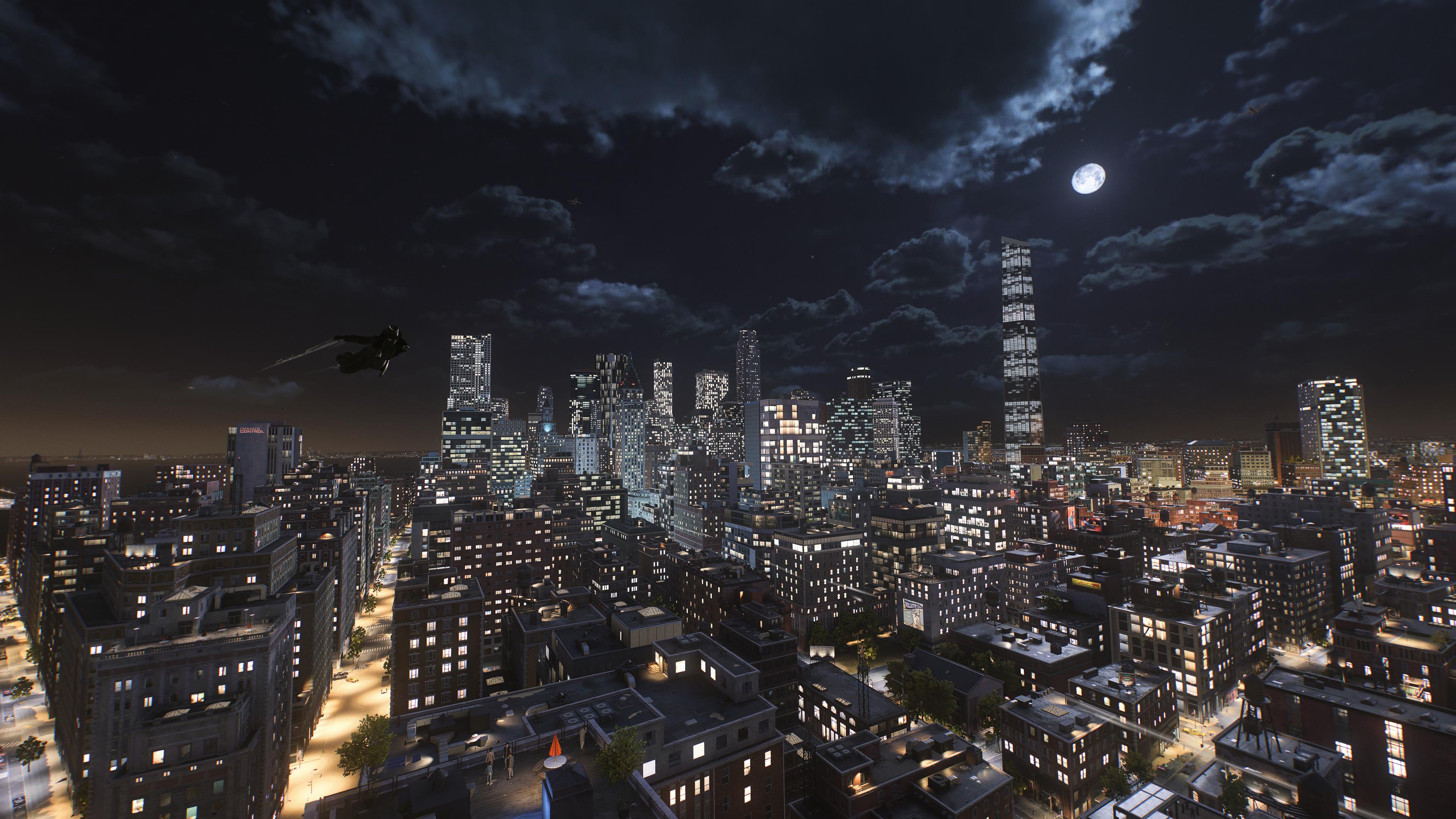
Swinging through Brooklyn yielded a bustling city-life with thinner streets, a little more greenery, shorter skyscrapers, and condensed rows of houses that made me feel right at home. I couldn’t help but get nostalgic traversing Coney Island and the Brooklyn Zoo. While seeing this borough from high-up is one thing, do yourself a favor and drop to the ground level. It’s wonderful to take a stroll and absorb the scenery.
Queens is similarly beautiful. I loved swinging above its train tracks, massive forest, and calmer city streets. I even took some time to walk through its suburban neighborhoods, and it brought back childhood memories of taking trips to visit cousins. Those peaceful streets with spread-out homes, gorgeous backyards, and stunning foliage contrast beautifully against the chaos of traditional NYC. Manhattan, Brooklyn, and Queens each have their own unmistakable feeling in real life, and Insomniac stays true to that.
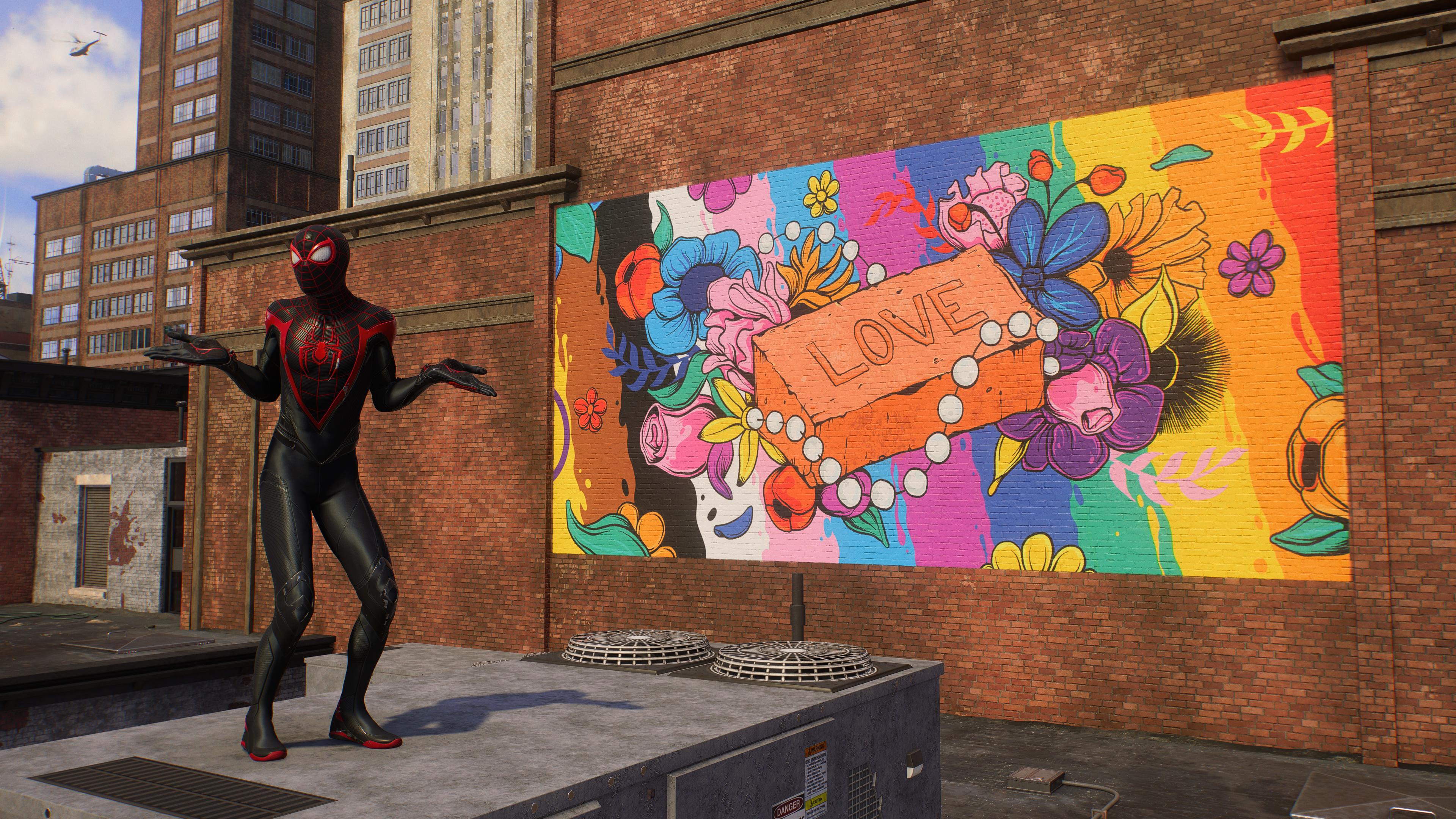
While experiencing New York’s gorgeous vistas on your own is great, the city comes to life in main missions. When exploring murky sewers, dimly lit construction sites, or Peter’s old high school, Spider-Man 2 proves it’s more than willing to implement a diverse locale that stands out from its open-world.
It would have been easy to design main missions around already-built parts of NYC, especially when an astounding amount of love and detail has been put into every street and building. But main missions feel crafted and precise thanks to their cinematic lighting and unforgettable degree of detail.
An improved yet still flawed open-world
Insomniac goes back to the drawing board with its open world and focuses on tighter, shorter-form side-content spread out evenly between main missions. Crimes are no longer mandatory for completing districts, while a majority of those smaller stories focus on characters. Rarely do I take the time to 100% a game, but I was invested enough in Spider-Man 2 to do so.
Detailing the fate of certain villains (while introducing new ones), teaming up with old friends, and helping the people of NYC in small yet memorable ways are a few of the highlights here. Slight spoilers, but one mission has Peter Parker reminisce about getting his first job at the Daily Bugle, forced to bike across Manhattan before James Jonah Jameson finishes his coffee. There are other missions like this that plastered a big smile to my face, while some brought me to tears.
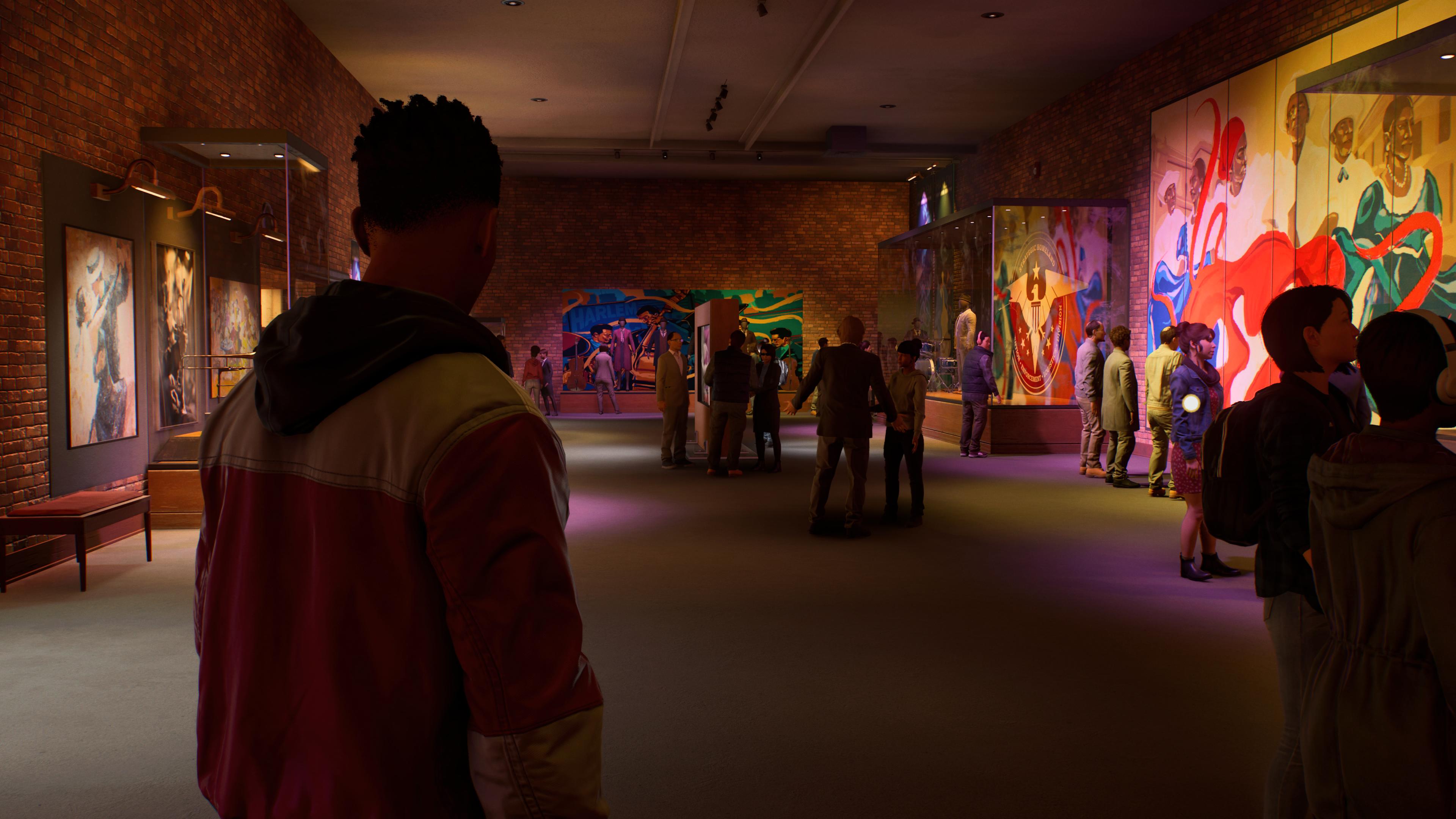
Unfortunately, there were three optional objectives I did not enjoy. One takes the player through NYC to snap photos, another has mini-games throughout the city, and the other hides an absurd number of spider-bots on buildings. At some point I got exhausted and felt like I was engaging in repetitive content for the sake of completionism, alongside wanting to see if it would end in an exciting little cutscene or new optional mission. By the end of all three, I wasn’t particularly satisfied, as only one ended on a cutscene and it was nothing more than a tease.
Other sets of missions have a repetitive structure but are more enjoyable because they highlight the game’s strengths. One mission series has the player chasing a drone at high-speeds, having to dodge explosions and lasers while gliding with Spider-Man’s new wingsuit. There are also combat challenges, battles throughout the city, and hideouts to either fight or stealth through. Kicking butt or gliding through NYC is far more fun than scanning every nook and cranny for hidden collectibles.
Banger after banger
Spider-Man 2 has a slow start. Its first-half introduces new characters, develops their relationships, and lays the tracks for its villains while focusing on two Spider-Men at once. But as soon as that second half hits, the main missions become something else entirely. Each is a massive event, not due to length or area size, but because their impact on the story is enormous. Fantastic set-pieces, cinematic boss fights, incredible plot developments, and a sense of pacing that had me clamoring for more result in an exhilarating campaign.
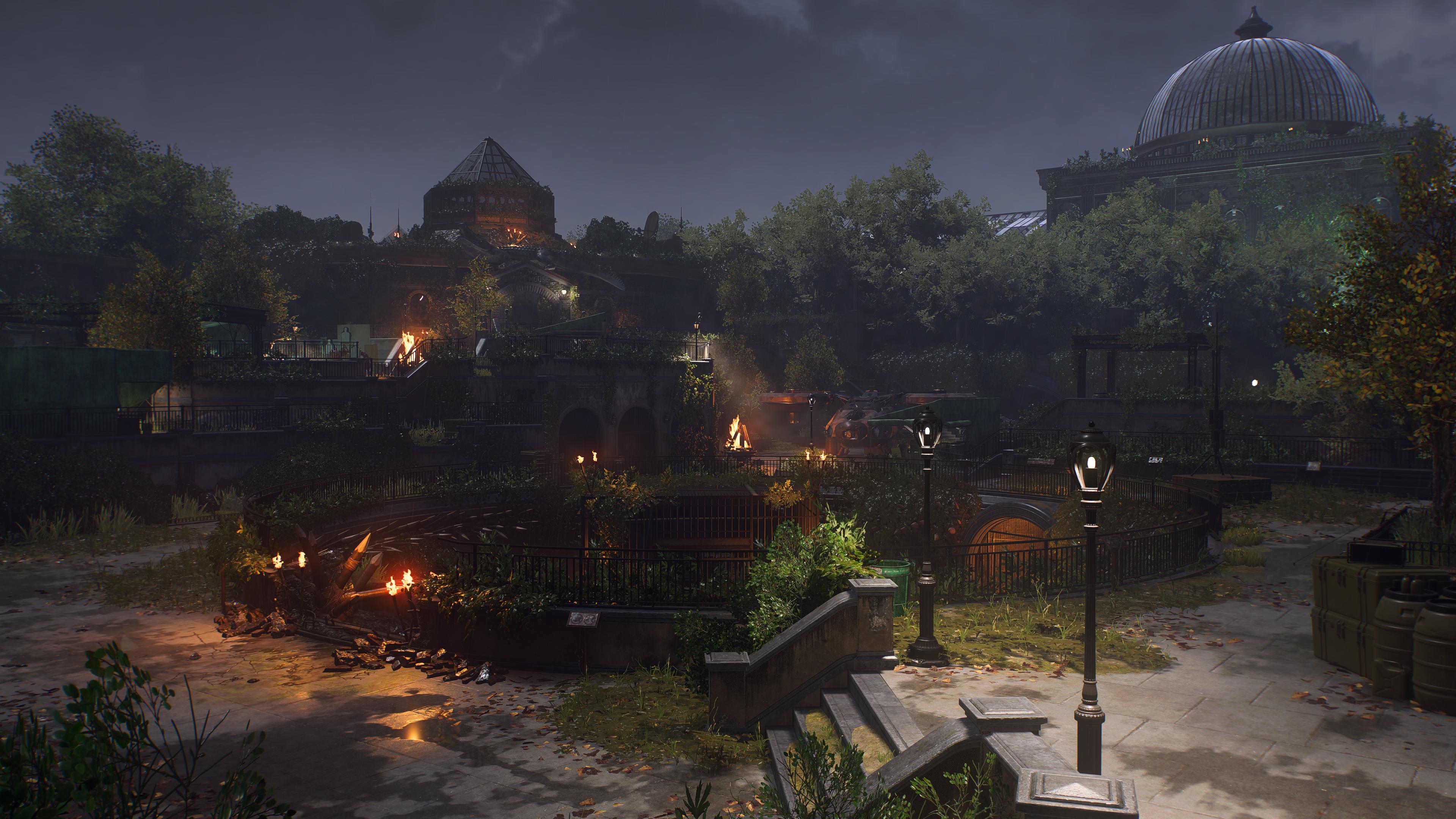
While I dreaded the inevitable Mary Jane gameplay that I never much enjoyed in the original Spider-Man, Insomniac knocks it out of the park. Rather than giving up in the face of criticism, the developer has put even more of a focus on it. Through tight stealth mechanics and expansive areas that are traversable in interesting ways, I loved the first two Mary Jane levels. But when it turned into a cheap-feeling arcade shooter on the third mission, it completely lost me.
Bottom line
In an age of superhero oversaturation, I had grown cynical. Spider-Man 2’s opening hours were full of doubt as I questioned if these sorts of stories were even for me anymore. Although this was heightened by presentation mishaps like flawed facial animations, it went beyond just that: I’m exhausted of tales revolving around hero versus villain.
But Insomniac did the most appropriate thing for a Spider-Man story. By focusing on people instead of titles, alongside themes questioning the nature of what lies beneath the mask, the developer has chipped away at that aforementioned cynicism. I always expected Spider-Man 2 would be fun, but I had no reason to believe it would reignite my admiration for what this genre can accomplish.

Self-described art critic and unabashedly pretentious, Claire finds joy in impassioned ramblings about her closeness to video games. She has a bachelor’s degree in Journalism & Media Studies from Brooklyn College and five years of experience in entertainment journalism. Claire is a stalwart defender of the importance found in subjectivity and spends most days overwhelmed with excitement for the past, present and future of gaming. When she isn't writing or playing Dark Souls, she can be found eating chicken fettuccine alfredo and watching anime.
